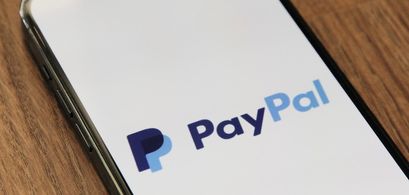Released at the turn of the millennium, PayPal revolutionized online payments and has only gone up ever since. In the era of contactless payments, digital wallets, and mobile payment apps, PayPal statistics show that the pioneer is still on top of its game, and no one even comes close to it.
While remaining the first choice of payment method for most consumers and merchants alike, the stats reveal that more than half of online buyers abandon the purchase if PayPal is not an option. Keep reading the article below to discover more revealing stats and facts demonstrating PayPal’s dominance in 2023.
Top 10 PayPal Statistics & Facts
There were 429 million active PayPal accounts in the first quarter of 2022.
647,066 companies worldwide list PayPal as an accepted payment method.
71.9% of the top 1,000 retailers accept PayPal.
The transaction volume of PayPal in 2021 was $1.25 trillion.
Consumers are 54% more likely to make an online purchase if the merchant accepts PayPal.
The average PayPal balance of an American consumer is $485.
The PayPal app is installed on 65% of all smartphones with mobile payment apps.
The number of PayPal transactions per second is 193.
52% of PayPal accounts in the US belong to female users.
The largest portion, or 29%, of people who use PayPal in the US, is aged between 50 and 64.
PayPal Adoption Rate Statistics
93% of German consumers used PayPal for at least one online purchase between August 2020 and August 2021.
PayPal statistics published in 2023 show that the service is more popular in Europe than in North America. As a matter of fact, five countries with the highest percentage of consumers making at least one online purchase using PayPal in the above period are from Europe.
Besides Germany, the top five consist of the UK and Italy with 91% each, France with 90%, and Spain with 89%. Canada and Mexico are just outside the top five, with an equal share of 85%, while Australia and Switzerland are just below them with 84% each. Finally, the USA and Austria share the number 10 spot, with 83% of their consumers qualifying as PayPal active users.
(Statista)
There were 429 million active PayPal accounts in the first quarter of 2022.
The three million new accounts that PayPal added to its tally at the start of 2022 were more than enough to reach a new all-time high number of active accounts. In 2021, PayPal’s active user database grew by 49 million accounts, which is a 13% year-over-year increase. It went from 377 million at the end of 2020 to 426 million by the end of 2021. PayPal trends show that the service is not done growing in 2022, although its growth has considerably slowed down.
(Statista)
22% of the US adult population primarily uses PayPal as a digital wallet.
A recent survey shows that 61% of American adults use digital wallets, while 39% still don’t own one. If we exclude non-users, the percentage of users that prefer PayPal jumps to 36%, which means that it is the primary method for more than a third of US consumers who use digital wallets.
In addition to PayPal users, there are 20% who favor Apple Pay, 16% prefer Venmo over everything else, 11% primarily use Google Pay, and only 3% choose Samsung Pay. The remaining 13% use other digital wallets.
(Civic Science)
71.9% of the top 1,000 retailers accept PayPal.
With such an acceptance rate, PayPal is the fifth most accepted payment method by the top 1,000 retailers. The only methods with a higher acceptance rate than PayPal’s are Visa and Mastercard, with 99.8%, American Express, with 97.3%, and Discover, with 92.5%.
PayPal’s percentage is much closer to the acceptance rate of cards traditionally accepted by most retailers. In comparison, Apple Pay is only accepted at 11.9%, Samsung Pay at 5.2%, Google Pay at 3.3%, and Venmo and 1.2% of the top 1,000 retailers.
(Digital Commerce 360)
647,066 companies worldwide list PayPal as an accepted payment method.
The above figure accounts for 56.55% of the online payment market. PayPal dominates this market so much that the second biggest share of 20.94%, which belongs to Stripe, is almost three times smaller than PayPal’s.
PayPal data further reveals that the biggest portion of these companies, or 60,762 of them, belong to the retail industry. In addition, 28,344 are non-profit organizations, 22,181 are civic and social organizations, 20,633 are hospitals and healthcare facilities, and 20,577 are religious institutions. The largest number of these companies, or 374,490, are located in the USA, 45,481 are in the UK, and 27,710 are in Canada.
(Enlyft)
85% of Gen X online consumers in the US say they’ve used PayPal before.
PayPal users by age statistics also reveal that an additional 14% of the consumers that belong to this generation said they were aware of it but never had the chance to use it. The service is also popular with millennials, 75% of whom have used PayPal before and 22% who have heard of it but never used it. Interestingly, 73% of baby boomers say they’ve used PayPal as well, and 26% of them who have never used it say they know of it.
(Statista)
PayPal Market Statistics
PayPal’s revenue reached an all-time high of $25.4 billion in 2021.
PayPal increased its revenue by $3.95 billion compared to the previous year, when it received $21.45 billion worth of income. However, in terms of profits, 2021 was slightly less profitable than 2020 for PayPal. In 2020 PayPal reported earnings of $4.2 billion, while in 2021, the company earned $4.169 billion. At the end of 2021, the total valuation of PayPal was estimated at $112.16 billion.
(Macro Trends)
PayPal’s transaction volume for 2021 was $1.25 trillion.
This was the first time that PayPal handled more than $1 trillion worth of payments, and this massive volume was generated through 19.3 billion transactions. Considering that at the time, PayPal had 426 million active users, the number of PayPal transactions per account in 2021 adds up to 45.4. In 2022, its TPV remains high, with $323 billion in the first and $340 billion in the second quarter.
(PayPal)
The number of PayPal employees in 2021 was 30,900.
The stats show that the number of people working at PayPal increases every year. For example, in 2021, PayPal had 16.6% more employees than in 2020, when it employed 26,500 workers. This number is expected to increase for the fifth year in a row.
(Macro Trends)
As of 2022, PayPal’s market cap is $112.01 billion.
Market statistics show that PayPal is currently the 114th most valuable company in the world by market capitalization. However, compared to previous years, PayPal’s market cap has plummeted in 2022. In 2021, the company saw almost twice bigger market cap of $220.26 billion, while in 2020, it was even higher, at $274.41 billion.
(Companies Market Cap)
PayPal Use Statistics
Consumers are 54% more likely to make an online purchase if the merchant accepts PayPal.
A recent study reveals that 59% of consumers have abandoned a transaction because the merchant did not accept PayPal. Moreover, only 24% of consumers say they would purchase an item from an unfamiliar brand if PayPal was not an option, while their percentage rises to 52% if they can use PayPal to make the purchase.
(PayPal)
The average PayPal balance of an American consumer is $485.
In comparison, the average American keeps $196 in their wallet. PayPal usage stats further reveal that 18% of Americans would put an extra $500 in their PayPal account if someone just gave it to them. This percentage increases to 27% when looking at the answers from millennials only.
When asked why they keep so much money in their PayPal accounts, 19% say they prefer PayPal over bank accounts, 25% say it is easier to track their expenses there, and 21% say they simply did not get around to moving their money.
(Logica Research)
66% of US PayPal consumers only shop from domestic merchants.
Furthermore, PayPal stats reveal that 27% of US consumers buy from domestic and cross-border merchants, while 7% do business exclusively with cross-border merchants. In comparison, Japanese users are most likely to buy from domestic merchants only with 94%, while only 1% of them shops solely from cross-border merchants.
Irish PayPal users, however, are least likely to only buy from domestic merchants, with only 16%. Most of them, or 65%, buy from domestic and cross-border merchants, while 19% buy exclusively from cross-border merchants, according to PayPal users by country statistics.
(PayPal)
The PayPal app is installed on 65% of all smartphones with mobile payment apps.
A recent survey reveals that almost eight out of ten smartphone owners have at least one mobile payment app installed on their phone and that app is PayPal for two-thirds of them. Additionally, 26% have Apple Pay, 25% have Google Pay, 23% have Venmo, and 18% of smartphone owners have the Zelle app installed on their cell phones.
(Strategy Corps)
China is the most likely destination for global PayPal shopping, receiving 26% of cross-border purchases.
PayPal stats also reveal that the US is in second place with a 21% share, followed by the UK with 14% of cross-border PayPal purchases. Germany with 10% and Japan with 5% round up the top five. Additionally, clothing, footwear, and accessories are the most likely items bought from a cross-border market, with 68% of the purchases. Consumer electronics, toys, and hobby items are also popular, with 53% of the consumers saying they bought them from an overseas market.
(PayPal)
The largest portion, or 29%, of people who use PayPal in the US are aged between 50 and 64.
According to PayPal demographics, the second largest group is users between 30 and 39 years of age, accounting for 26% of the US PayPal account owners. The age groups of 18 to 29 and 40 to 49 years old both have an equal share of 22%. The age distribution of Americans using PayPal is almost the same as for online payment users. Namely, 50 to 64 year olds account for 28%, 30 to 39 for 27%, 18 to 29 for 23%, and 40 to 49 for 22% of online payment users.
(Statista)
PayPal Fast Facts
PayPal is available in more than 200 countries and regions worldwide.
It supports over 25 different currencies, and more than 30 million merchants already have a PayPal business account.
(PayPal, PayPal)
PayPal’s subsidiary Venmo already has over 83 million users.
As a solution meant to be an alternative to PayPal and appeal to a younger audience, Venmo does a great job, as 68% of millennials say Venmo is their preferred mobile payment method.
(Venmo, Lend Edu)
The number of PayPal transactions per second is 193.
In comparison, Visa handles 1,667 transactions per second, while the most popular cryptocurrencies, Bitcoin and Ethereum, handle only about 27.
(ING UC)
52% of PayPal accounts in the US belong to female users.
The gender distribution between PayPal accounts in the US is aligned with the gender distribution of online payment users, 52% vs. 48%, in favor of women.
(Statista)
The PayPal Holdings stock price reached $308.53 on July 23, 2021.
As of August 2022, PayPal’s stock is traded for $95.40 and moves within a daily range of $94.80 to $96.99.
(Macro Trends, Market Watch)
PayPal’s percentage of online transactions in the US is 22%.
PayPal’s $1.25 trillion transaction volume can’t be compared to any other mobile payment method, and it is only topped by credit and debit cards.
(Statista)
FAQs About PayPal
How many PayPal transactions per day are there?
When was PayPal founded?
How many users does PayPal have?
How much money does PayPal make?
Conclusion
These PayPal statistics only confirmed what was already apparent. PayPal is the biggest digital wallet in the world, and no other mobile payment method is in its league. Instead, it competes with the likes of Visa and Mastercard.
Moreover, there are no indicators that its dominance will stop anytime soon, though it may be expanded further through Venmo. PayPal is a worldwide money transfers leader and has the data to back it up, so we can expect it to continue its reign in the next decade.
Sources:




.jpg)
.jpg)

